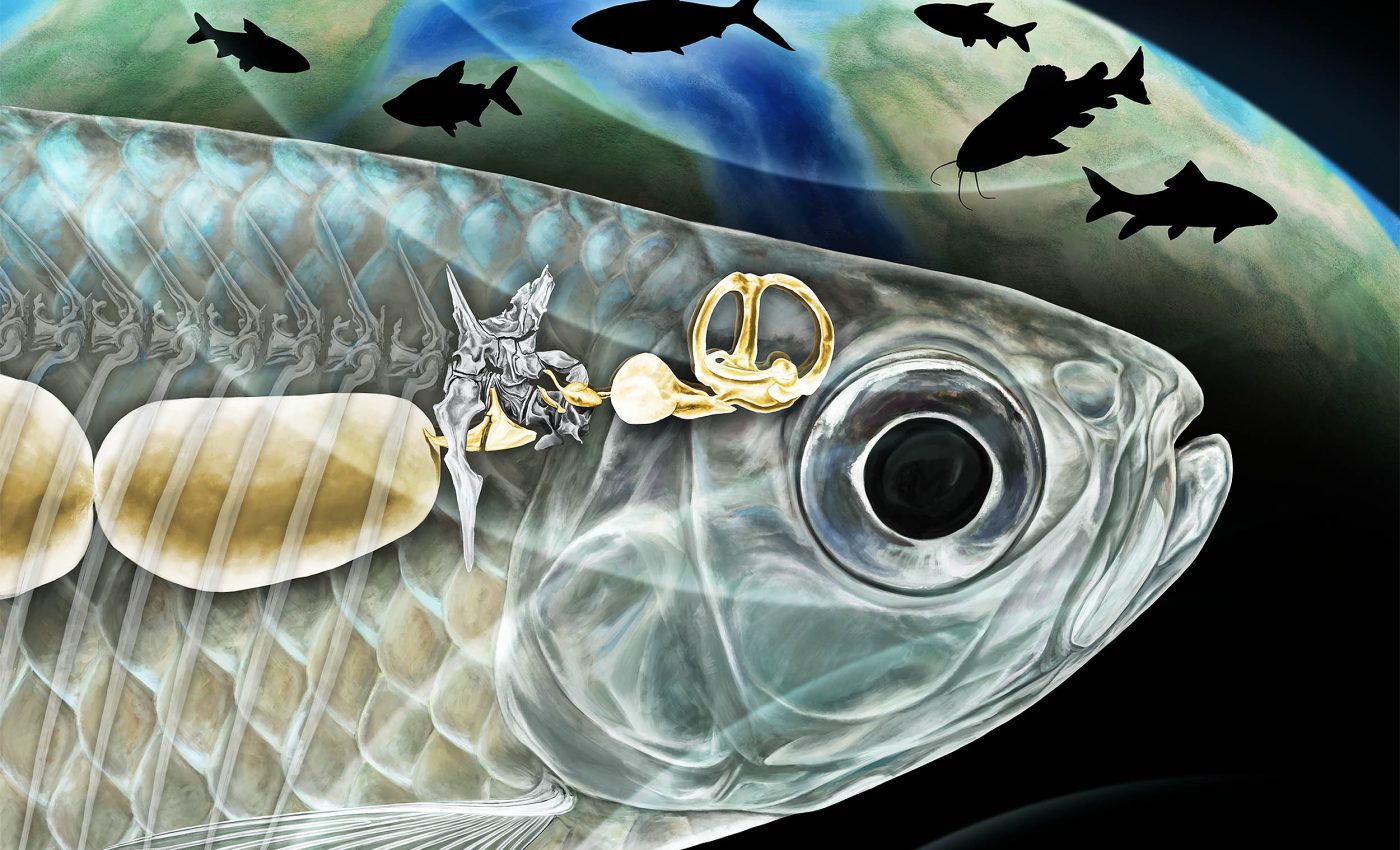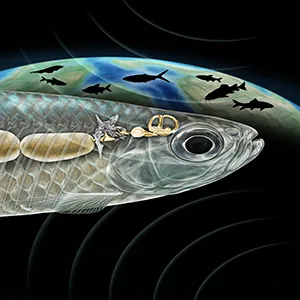
Tiny fossilized ear bones rewrite the story of fish evolution in North America
A minuscule, 1.6 inch fish fossil from southwestern Alberta, called Acronichthys maccognoi, is rewriting part of the freshwater family tree.
The Late Cretaceous skeleton carries hallmark features of otophysans – the vast supergroup that today includes catfish, carp, and tetras – and plugs a crucial hole in their early history.
It also hints that these fish shifted between salt and fresh water more than once as they spread across the globe.
Researchers from Western University, the Royal Tyrrell Museum of Palaeontology, and international collaborators dated the fish fossil to the Late Cretaceous.
That period makes the fossil somewhere between 100.5 and 66 million years old, which would be the oldest otophysan yet known from North America.
Otophysans dominate freshwater today
Otophysans dominate modern fresh waters, accounting for roughly two-thirds of all species. What unites them is a distinctive anatomical trick.
The front four vertebrae are remodeled into a sound-transmission rig that carries vibrations from the gas-filled swim bladder to the inner ear.
This sharpens hearing, much like a tiny bones-and-cables system. In Acronichthys maccognoi, that setup is visible even to the naked eye. For paleontologists, it’s a smoking gun.
“The reason Acronichthys is so exciting is that it fills a gap in our record of the otophysans supergroup,” said senior author Neil Banerjee, a professor at Western University, London, Ontario.
“It is the oldest North American member of the group and provides incredible data to help document the origin and early evolution of so many freshwater fish living today.”
Fragile fish fossil scanned in 3D
The skeleton itself is as delicate as tissue paper. To capture its internal architecture, the team turned to synchrotron X-ray micro-CT scanning.
The method stacks thousands of ultra-thin X-ray slices into a crisp 3D model – no chisels required.
“Many of the fossil specimens collected by the Royal Tyrrell Museum are incredibly fragile,” said co-author Lisa Van Loon from Western University.
“Some are impossible to extract from the rock itself, so micro-CT scans provide not only the best method for picking up detailed images of what’s inside, they’re also the safest way to avoid destroying the fossil all together.”
Those scans revealed the classic otophysan modifications in miniature, along with other skeletal details that mark Acronichthys as a lineage unto itself rather than a juvenile of a known species.
Oceans to rivers, again and again
The find does more than add a name to the roster. It sharpens the timeline for when otophysans split and how they moved between habitats.
The authors infer that early members of the group originated in the oceans before colonizing freshwaters – and that this shift likely happened at least twice.
Their analysis places a key marine-to-freshwater divergence around 154 million years ago, in the Late Jurassic, well after the supercontinent Pangaea began to fragment some 200 million years ago.
That timing sets up a puzzle. Today’s otophysans are freshwater fish scattered across every continent except Antarctica.
If their ancestors couldn’t swim across open salt water, how did they spread so widely after continents pulled apart?
The Late Jurassic date pushes researchers to explore alternate routes – perhaps via transient brackish corridors, coastal floodplains, or river systems that briefly connected as seas rose and fell.
Acronichthys maccognoi fossil
The Alberta fossil bed that yielded Acronichthys maccognoi sits in the shadow of headline-grabbing dinosaurs. But for reconstructing freshwater ecosystems, it’s a gold mine.
The new skeleton shows Cretaceous North American rivers already held otophysans with their signature ear-to-bladder link.
“Dinosaurs are pretty exciting, so a lot of time and effort has been focused on them so we know a lot about what they were like,” said co-author Donald Brinkman from the University of Alberta.
“We’ve only scratched the surface when it comes to understanding the diversity of prehistoric freshwater fish.”
“There’s still so much we don’t know, and a fossil site right here in Canada is giving us the key to understanding the origins of groups that now dominate rivers and lakes around the world.”
Otophysans and the power of hearing
Modern otophysans are ecological powerhouses. They graze algae, sift mud for invertebrates, control pests, and fuel food webs from the Amazon to the Mekong.
A clearer origin story helps explain how such diversity exploded and why certain body plans – especially enhanced hearing – were so successful in silty, noisy rivers.
Acronichthys maccognoi also tightens the link between anatomy and environment.
The Weberian apparatus – an ear-to-swim-bladder bridge – likely gave fish a sensory edge in murky waters. It allowed small species to detect predators, prey, and mates at greater distances.
Finding the apparatus in a tiny Cretaceous fish shows that this innovation was already in place early, setting the stage for the later radiation that now dominates fresh waters.
Learning from Acronichthys maccognoi
There’s practical payoff, too. The micro-CT roadmap that preserved every sliver of bone becomes a template for studying similarly fragile fossils elsewhere, many of which can’t be freed from the surrounding rock.
As more sites adopt non-destructive scanning, scientists can compare early otophysan forms across continents and stitch together dispersal routes that don’t require impossible ocean crossings.
For now, a fish no longer than a matchstick has outsized importance. It fills a geographic gap and narrows a timeline.
It also nudges a debate about how fish lineages colonized inland waters – not with a splashy new monster, but with the quiet, elegant engineering that still defines much of life in our rivers and lakes.

The study is published in the journal Science.
—–
Like what you read? Subscribe to our newsletter for engaging articles, exclusive content, and the latest updates.
Check us out on EarthSnap, a free app brought to you by Eric Ralls and Earth.com.
—–













